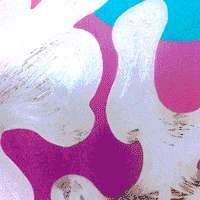Indexing
Images can be separated according to categories, distinctions, and depth of analysis.

"Although any subject, whether of a text or an image, can be described in both broad and narrow terms, images are different from text in that they are always of a specific instance of something...This characteristic of images makes it particularly important to provide access to a subject of an image at as many points as possible within the range of terms that can describe or identify that subject." 11
Description, Identification, Interpretation:
Three levels of subject analysis, designed and used for the categorization of art images. They illustrate the layered nature of the indexing process. 9
I chose to focus on the subjects of images because while information regarding the medium, origin, and creator are also relevant, the subject of an image is what is most remembered - and subsequently searched for online.
Description
All generic elements of the image that would be obvious to any viewer

Objects

Sometimes images only need descriptive indexing to capture their entireity:
"red"
"popsicle"

Other times, it is only a starting point:
"tea party"
"animals"
"girl"
"pocket-watch"
"rabbit"
"top hat"
Identification
Includes the context and names of depicted persons and events (the iconography of the image)

Objects
+ Names

Only someone familiar with the culture/icons/religion would be able to add this additional layer of meaning
"Nativity scene"
"The Virgin Mary"
"Jesus Christ"
"Christianity"
"Christmas"
"Saints"
Interpretation
Incorporates the broader meanings and more abstract themes attached to the iconography present in the image

Objects
+ Names
+ Symbols

"Liberty"
"freedom"
"the American dream"
"To be or not to be"
"existentialism"
"human existence"
"suicide"
"tragedy"

